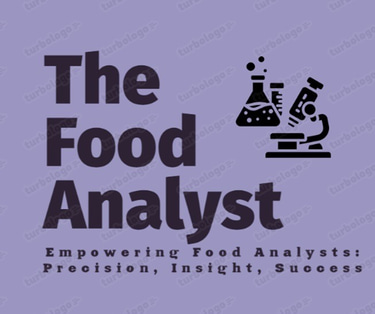"Empowering food analysts and laboratory professionals with expert insights, ISO 17025 resources, regulatory updates, industry testing requirements, training, and career opportunities for excellence in food testing."
Ethylene Oxide: Overview
Ethylene oxide (EtO) is a colorless gas widely used as a sterilizing agent and in industrial applications. However, it is classified as a Group 1 carcinogen, raising significant food safety concerns. In April 2024, authorities in Hong Kong and Singapore detected EtO contamination in Indian spice brands MDH and Everest, leading to global recalls and heightened regulatory scrutiny. Countries like the UK, US, Australia, and the Maldives responded with stricter import controls, affecting India's $4 billion spice export industry. The Spices Board of India and FSSAI have since enforced rigorous testing measures to ensure compliance and restore consumer confidence.
ANALYTICAL CHEMISTRY
2 min read
Introduction
Ethylene oxide (EtO) is a colorless, flammable gas with a faintly sweet odor. It is broadly used in the production of various consumer goods including detergents, solvents, and plastics. Moreover, EtO serves as a sterilizing agent for medical equipment and certain food products. However, due to its classification as a Group 1 carcinogen by the International Agency for Research on Cancer, monitoring and detecting EtO levels is essential for ensuring food safety.
In April 2024, health authorities in Hong Kong and Singapore detected ethylene oxide, a carcinogenic compound, in spice products exported from India.
Ethylene Oxide: Uses and Risks
Ethylene oxide is a colorless gas commonly used as a sterilizing agent and pesticide. While effective in eliminating bacteria and pests, it is classified as a Group 1 carcinogen by the International Agency for Research on Cancer, indicating a clear link to cancer in humans. Prolonged exposure can lead to serious health issues, including lymphoma, leukemia, and breast cancer.
Detection in Indian Spices
The initial alert was raised by Hong Kong's Centre for Food Safety, which found ethylene oxide in several spice blends from MDH and Everest. Following this, Singapore's Food Agency recalled Everest's Fish Curry Masala after detecting ethylene oxide levels exceeding permissible limits.
Global Response
The contamination concerns prompted actions from various countries:
United Kingdom: Enhanced control measures for all Indian spice imports, focusing on pesticide residues.
New Zealand and Australia: Initiated investigations into potential contamination.
United States: The Food and Drug Administration (FDA) began scrutinizing Indian spice imports.
Bangladesh and Maldives: Took steps to address the issue, with the Maldives banning the sale of Indian spices.
These actions underscore the global concern over food safety and the integrity of imported spices.
Economic Impact on India's Spice Industry
India is a major player in the global spice market, exporting over 200 varieties to around 180 countries, generating approximately $4 billion annually. Domestically, the spice market is valued at $10 billion, making India the largest consumer of spices worldwide. Brands like MDH and Everest have a substantial global presence, exporting to regions including the US, Europe, Southeast Asia, the Middle East, and Australia. The Spices Board of India has mandated comprehensive product testing for exports and is collaborating with exporters to trace the contamination source. This incident has also prompted calls for stringent quality checks within domestic markets, emphasizing the need for improved regulatory oversight.
Industry and Regulatory Responses
In response to the detections, the Spices Board of India mandated pre-shipment testing for ethylene oxide residues in all spice exports to Singapore and Hong Kong from May 7, 2024. Additionally, the Food Safety and Standards Authority of India (FSSAI) initiated nationwide sampling of spices to ensure compliance with safety standards.
References:-
© 2025. All rights reserved. All content on this website is the intellectual property of The Food Analyst. Unauthorized use or reproduction is prohibited.
Contact Us
The Food Analyst Team
We are available in multiple locations:
Bangalore | Delhi | Mumbai
Email for editorial: contact@foodanalyst.in
For advertisement: inquiryfoodanalyst@gmail.com
